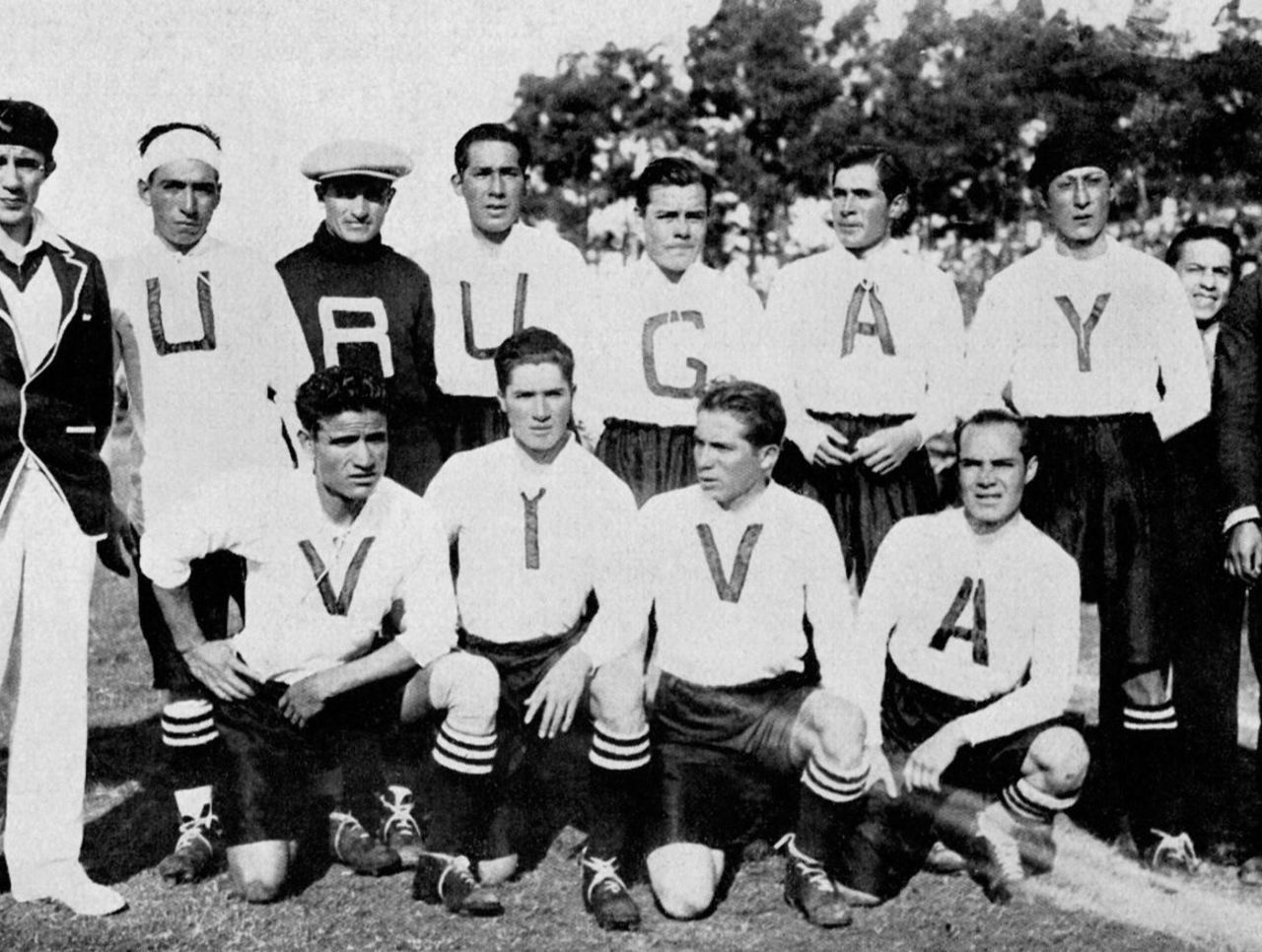What happened at the 1930 World Cup?
In the weeks leading up to the 2014 World Cup in Brazil, we'll set the scene for the next incarnation of the greatest sporting event in the world by reliving each of its predecessors. We begin the build up today, with the first ever World Cup.
Who, what, why, when and where?
Who: 13 squads from Europe (4), North America (2) and South America (7).
What: The inaugural FIFA World Cup.
Why: Because football.
When: July 13, 1930 to July 30, 1930.
Where: Uruguay.
The Final: Uruguay 4 - Argentina 2

After being down 1-2 at the half in front of 90,000 spectators at the newly built Centenary Stadium, the home side scored three unanswered goals in the final 45 minutes to win the first ever World Cup.
How Did It Happen?
The success of the Olympic soccer tournament, combined with the rise of professionalism, prompted FIFA to organize its own international competition. Uruguay, celebrating its centenary, was selected as host nation because they were the only bidding country willing to reimburse the travel costs of the competitors.
Why It Almost Never Happened
After Uruguay won their bid to host, the other bidding nations — Italy, Sweden, the Netherlands and Spain — refused to travel to South America. Austria, Hungary, Germany and Switzerland also said no. England wasn’t part of FIFA so they weren’t even invited.
Two months ahead of the tournament, it seemed no European nation would compete. The South American federations were furious and threatened to resign from FIFA. The governing body scrambled to find participants and, under pressure, Belgium eventually acquiesced. France, Romania and Yugoslavia followed, and the World Cup was saved.
Major Innovations
Everything.
The Controversy
Before the final, Argentina and Uruguay disputed over which ball should be used in the match. After a coin flip, the Argentine ball was used in the first half, and a ball from a Uruguayan manufacturer was used in the second half.
The Forgotten Story
Following the final, the Uruguayan consulate in Buenos Aires was literally stoned by a mob of Argentines furious at the result.
Golden Boot
Guillermo Stábile - Argentina (8 goals).
Best Job Stealer
Stábile, again. The only reason he became a starter for Argentina was because Manuel Ferreira had to leave the tournament to take a university exam. Priorities.
The More Things Change
A rushed construction schedule, coupled with delays due to the rainy season in Uruguay, meant Centenary Stadium — where the majority of matches were scheduled — wasn’t ready until five days into the tournament.
Substitutes?
Not allowed yet. An injury meant your side was down a man.
Group Stage?
Yes, but only because of the odd number of entrants. Original plans called for a straight knockout tournament.
Craziest Match: Argentina 1 - France 0
In a tightly contested battle, Argentine Luis Monti, who had previously injured two French players with his constant barrage of brutal tackles, scored on a free kick eight minutes from time. Three minutes later, France would have its best chance of the match with Marcel Langiller finding a clear path to Argentina’s goal, only for the Brazilian referee to blow the whistle for the end of the match with at least five minutes remaining.
Mayhem ensued. Everyone ran onto the pitch. When mounted police finally restored order, the match was restarted only for nothing to happen. Argentina would go on to win, but it was the French players who were carried off on the shoulders of spectators.
Next Craziest Match: Argentina 6 - Mexico 3
Five penalties were awarded. Surprisingly none involved Monti, who didn’t play.
The United States?
Yup. Composed of British and Scottish professionals who played in the U.S., the men’s national team was one of four seeded teams in the tournament. They won their pool without allowing a single goal to Belgium or Paraguay, but fell to Argentina in the semifinals.
Thanks For Coming Out
Running to the aid of a fallen player during their match against Argentina, American trainer Jack Coll dropped a bottle of chloroform on the pitch, bent over to pick it up, inhaled its fumes, and had to be stretchered off himself.
Other sources suggest that the real story wasn’t so dramatic. Someone accidentally knocked Coll’s hand while he was attending to a player, and smelling salts fell into the player’s eyes.
At Least They Meant Well

Bolivia attempted to pay tribute to their hosts by wearing shirts that spelled out "Uruguay Viva." Unfortunately, it appears as though their squad was short one "u."
Best Villain
Peru’s Plácido Galindo was the first player ever sent off at the World Cup, after a series of brawls and rough challenges including one that broke Romania’s Adalbert Steiner’s leg.
Best Hitchhikers
Brazil caught a boat ride to Uruguay with the European teams, who enjoyed a brief stop over there after their journey across the Atlantic.
Best Chant
Argentina: “Argentina, si. Uruguay, no. Victory or death.”
Most Dedicated Family Man
Uruguayan keeper Antonio Mazzali was expelled from the squad after he was discovered sneaking out of the hotel to visit his family.
Player Most Likely To Later Be Shot By The French Resistance
Alex Villaplane, captain of the French team, would go on to collaborate with the Nazis during World War II, and meet an untimely end because of this allegiance.
Player Most Likely To Have Killed Richard Kimble’s Wife
Uruguayan center forward Hector Castro, who scored the final goal of the 1930 World Cup, lost his left arm in a childhood accident.
Last Surviving Player
Argentina's Francisco Varallo died 80 years after the tournament on August 30, 2010, at age 100.
Legacy
Uruguay's aggregate goal difference of +12 over four games is still the highest average goal difference per match of any World Cup champion.